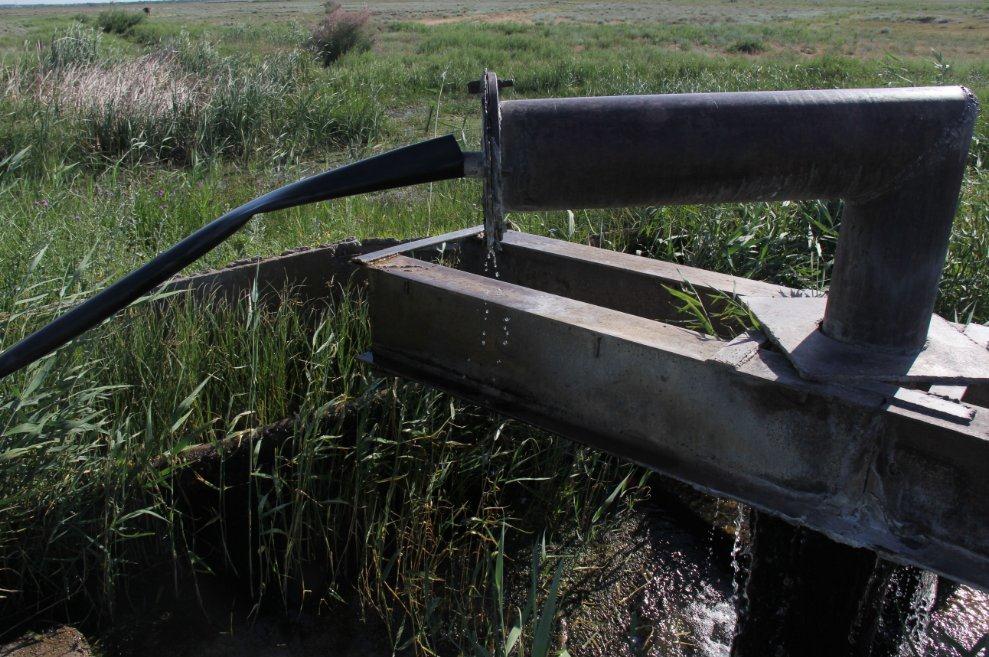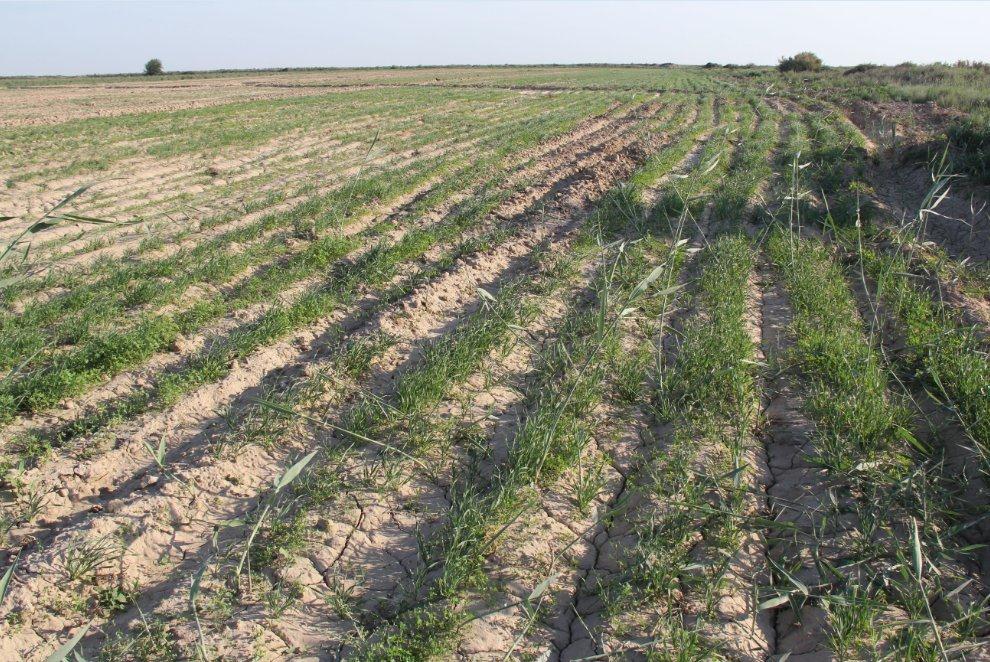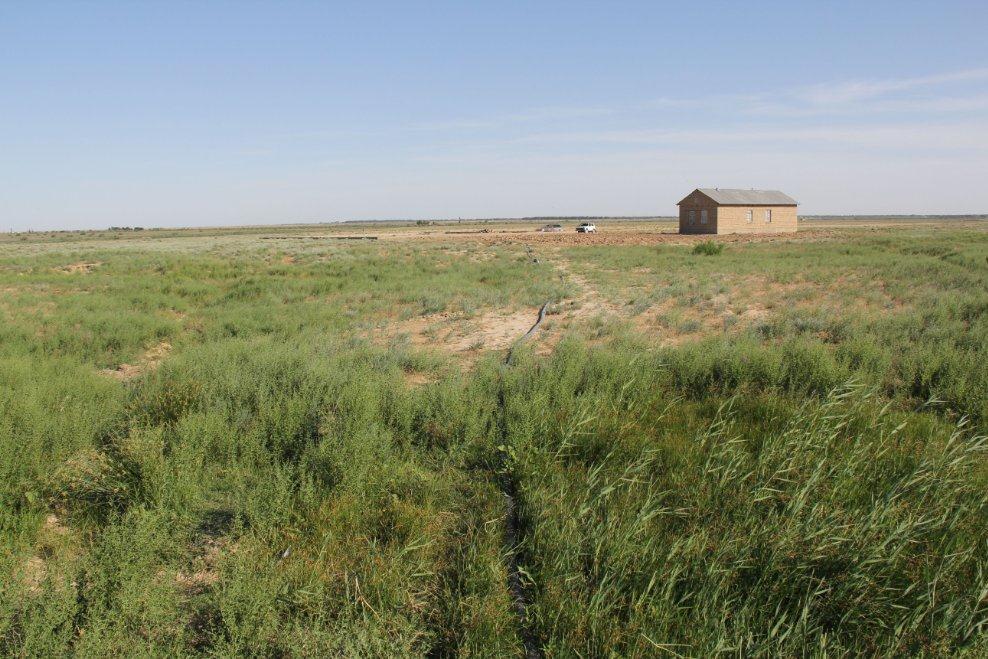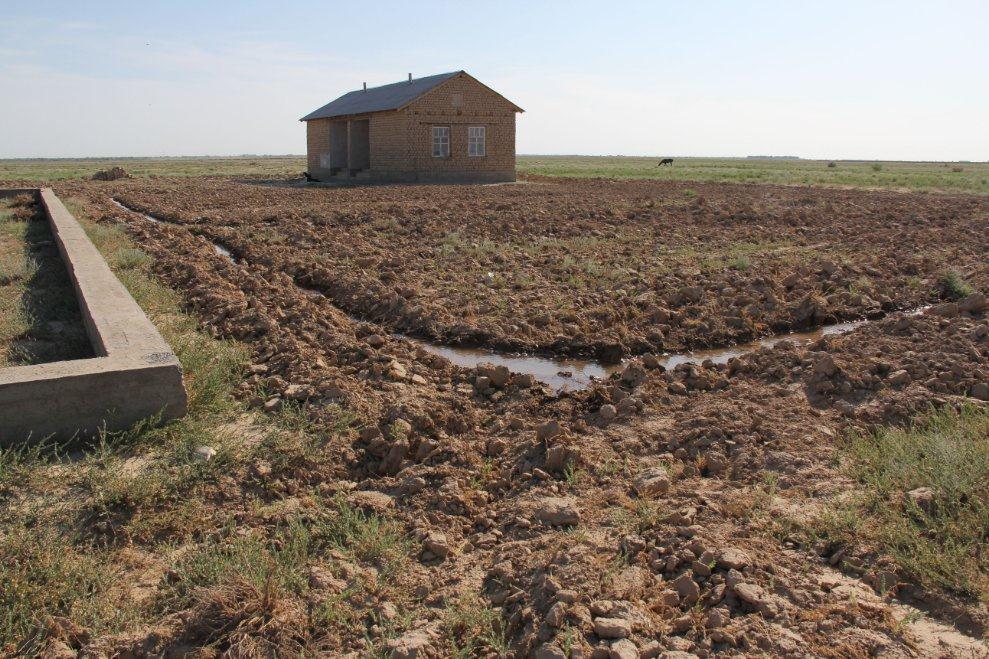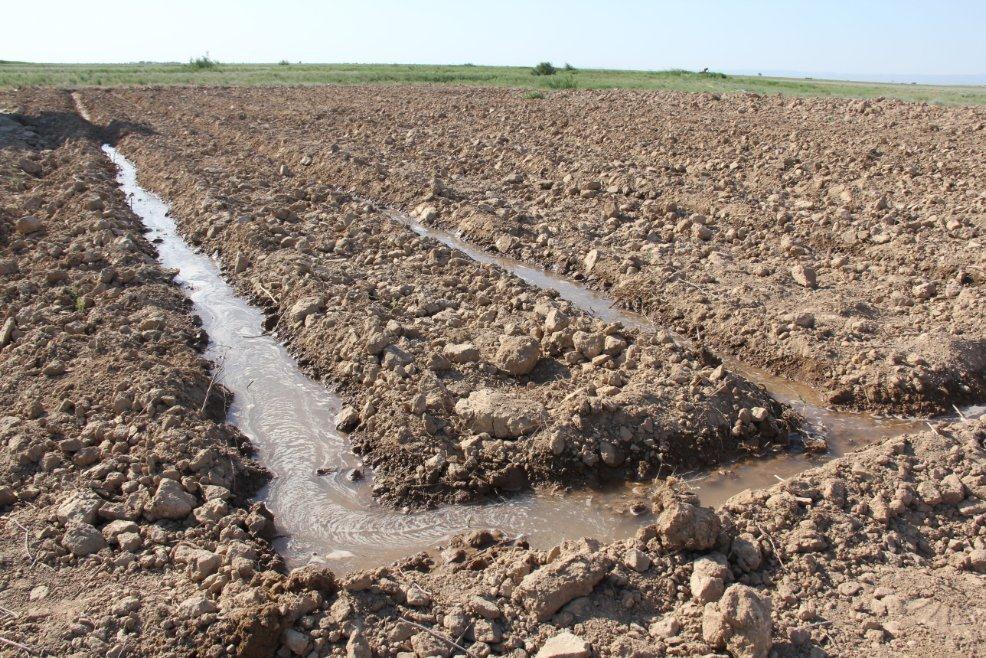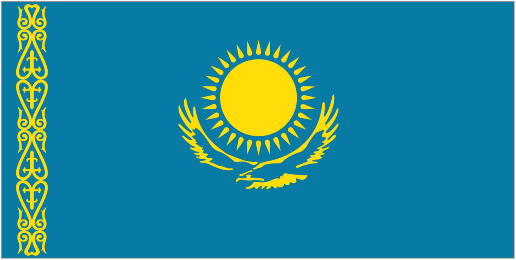CBA Kazakhstan: Sustainable Water and Land Management in South Kazakhstan under Increased Aridity (Biogene PA)
Project Overview
The Ushkaik rural district, located in the Syrdarya River valley, incorporates 4 villages (А. Usenov, Kyzyl Sharua, Otkomsovkhoz, Nurtas) comprising 940 households and totaling 5842 rural inhabitants. Winters are mild, with frequent thaws. Climate change variability such as rising temperatures and lower precipitation has led to water deficits and land degradation in the area. Reduced soil moisture has caused a decline in pastoral vegetation cover and a reduction in vegetative yields, further aggravating the area’s economic woes.
This Community-Based Adaptation project demonstrates new agricultural practices to reduce risks in the face of changing climate conditions. Through a participatory approach, the project introduces innovative water use methods and goat stabling as an alternative to cattle farming. Activities will establish forage-based arable lands within household plots, install sustainable groundwater and irrigation technologies, assist the transition to milk-producing goat livestock, and disseminate lessons learned across similar contexts in Kazakhstan.
* This project is part of Kazakhstan's Community-Based Adaptation portfolio. *
Project Details
In soviet times, farms in the Syrdarya River Valley were well organized, with a network of irrigation channels and vast areas of irrigated lands under corn, barley, wheat and alfalfa. Cattle farming activities were well developed on the natural grazing lands, and farms produced hay, silage and fodder.
Nowadays, the area is facing deficits in both irrigation water (irrigation channels are abandoned and destroyed) and precipitation (snow and rains). For these reasons, suitable agricultural land is scarce, and pastures are in a deplorable state. Members of the local communities breed cattle unsystematically, with the animals grazing near the village year-round. The small amount of fertile land is under heavy pressure, resulting in degradation and erosion. Lands are overgrazed with predominantly low-value vegetation unfit for cattle feeding.
The project site could now be defined as a typical semi-desert, where climatic factors such as rising temperatures and declining precipitation levels alter the pastoral species composition—the share of drought resistant vegetation unfit for cattle feeding (Pegonum gormola) is growing. Crop yields and plant biomass are reducing. Barring urgent action, the fertile layer of land will be eroded, significantly reducing biological and economic productivity.
This Community-Based Adaptation project focuses on sustainable land and water resources management to assist the people of the Ushkaik rural district in adapting to climate change. The project will plant alfalfa on 50 hectares of arable land and within household plots to establish a healthy forage base. Livestock owners will be assisted in the transition from conventional cattle farming (cows, sheep and horses) to the more economically and environmentally beneficial breeding of specialized milk-producing Saanen goats. This large breed has high milk productivity, producing up to 700 liters annually. Mini goat-breeding farms will be constructed to demonstrate the benefits of this practice. A new rotating system of pastoral management will be developed to reduce environmental impact and increase productivity.
These activities will ensure additional revenue for community members, while the enhanced forage growth improves soil fertility for future ecosystem health and reduced land degradation.
Key Results and Outputs
Outcome 1 (co-financing): Development of economically and environmentally beneficial non- grazing Saanen goat breed as an alternative to the conventional grazing cattle farming
Design mini goat-breeding farms (Output 1.1) and establish 4 at local household family plots (Output 1.2). Conduct a comparative analysis of price offers for Saanen breed goats and purchase 60 goats (Output 1.3), then develop a feeding ration and set of veterinary activities for their care (Output 1.4).
Objective 2 (CBA-funded): Development of the demonstrational sites of seeded grasslands in order to enhance the forage base of the local community’s livestock
Pre-seed alfalfa and barley seeds to raise the yield capacity of agricultural crops (Output 2.1), prepare and seed 50ha of fields (Output 2.2), and establish appropriate irrigation systems (Output 2.3). Collect alfalfa hay (Output 2.4).
Objective 3 (CBA-funded): Rational groundwater management for the irrigation needs with due regard to the climate changes within the project site
Drill 4 irrigation wells (Output 3.1), lay piping and install sprinklers (Output 3.2), and train villagers on how to operate irrigation (Output 3.3).
Objective 4 (co-financing): Seasonal grazing patterns developed for the rational use of lands
Survey 110 ha of pastures maintained and identify pastoral forage value (Output 4.1). Implement a system of rational grazing within grassland area (Output 4.2). Organize meetings, discussions and field days for neighboring communities to discuss adaptation to increased arid conditions (Output 4.3).
Objective 5 (CBA-funded): Environmental awareness activities and sharing the project experience
Inform local community members of increasing climate change risks (Output 5.1) and train them to understand the relationships between pasture condition, forage quality/quantity, and their own wellbeing (Output 5.2). Publish a manual (in Kazakh and Russian) on the advantages of non-grazing goat breeding and sprinkler irrigation in the context of climate change adaptation (Output 5.3). Organize a demonstrational workshop to spread project ideas (Output 5.4) and disseminate project via mass media for replication in other communities (Output 5.5).
Reports and Publications
Annual Reports
PIFs
Monitoring and Evaluation
The project implementation will be measured based on the indicators as listed below:
- The number of Saanen goats, milk yield, weight gain;
- Acclimatization of goats;
- Changes in soil moistening and mechanical composition as compared to the baseline conditions to be determined at the startup of the project;
- Conditions of LC’s pastures as compared to the baseline conditions to be determined at the startup of the project;
- Welfare of LC members after changing the land and water resources management strategy as compared to the baseline conditions to be determined at the startup of the project.
These indicators will be analyzed on the background of the meteorological data of the nearest station in order to measure the changes in the quantity of the products made against climate conditions.
